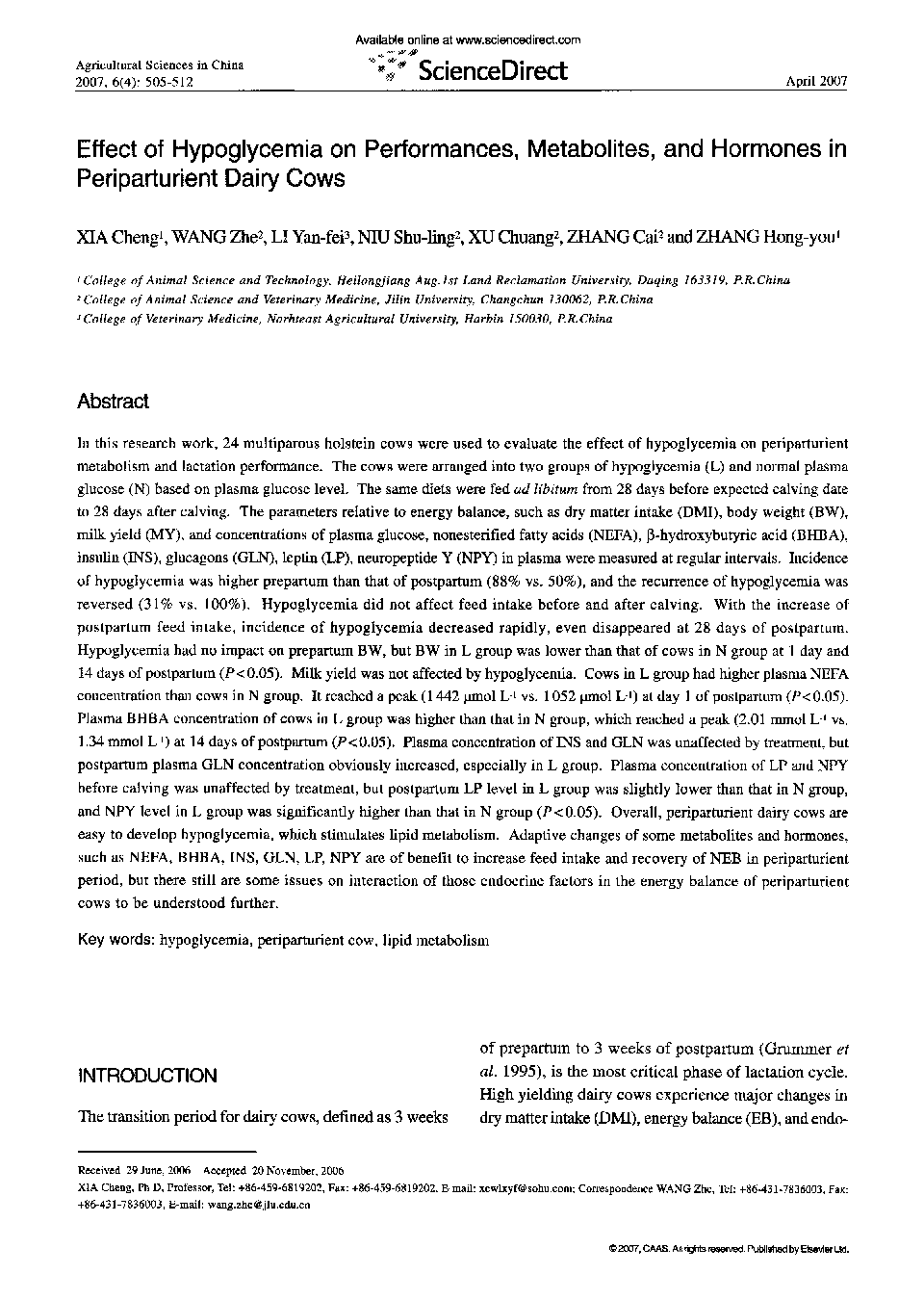| Article ID | Journal | Published Year | Pages | File Type |
|---|---|---|---|---|
| 4490888 | Agricultural Sciences in China | 2007 | 8 Pages |
In this research work, 24 multiparous holstein cows were used to evaluate the effect of hypoglycemia on periparturient metabolism and lactation performance. The cows were arranged into two groups of hypoglycemia (L) and normal plasma glucose (N) based on plasma glucose level. The same diets were fed ad libitum from 28 days before expected calving date to 28 days after calving. The parameters relative to energy balance, such as dry matter intake (DMI), body weight (BW), milk yield (MY), and concentrations of plasma glucose, nonesterified fatty acids (NEFA), β-hydroxybutyric acid (BHBA), insulin (INS), glucagons (GLN), leptin (LP), neuropeptide Y (NPY) in plasma were measured at regular intervals. Incidence of hypoglycemia was higher prepartum than that of postpartum (88% vs. 50%), and the recurrence of hypoglycemia was reversed (31% vs. 100%). Hypoglycemia did not affect feed intake before and after calving. With the increase of postpartum feed intake, incidence of hypoglycemia decreased rapidly, even disappeared at 28 days of postpartum. Hypoglycemia had no impact on prepartum BW, but BW in L group was lower than that of cows in N group at 1 day and 14 days of postpartum (P<0.05). Milk yield was not affected by hypoglycemia. Cows in L group had higher plasma NEFA concentration than cows in N group. It reached a peak (1442 μmol L−1 vs. 1052 μmol L−1) at day 1 of postpartum (P<0.05). Plasma BHBA concentration of cows in L group was higher than that in N group, which reached a peak (2.01 mmol L−1 vs. 1.34 mmol L−1) at 14 days of postpartum (P<0.05). Plasma concentration of INS and GLN was unaffected by treatment, but postpartum plasma GLN concentration obviously increased, especially in L group. Plasma concentration of LP and NPY before calving was unaffected by treatment, but postpartum LP level in L group was slightly lower than that in N group, and NPY level in L group was significantly higher than that in N group (P<0.05). Overall, periparturient dairy cows are easy to develop hypoglycemia, which stimulates lipid metabolism. Adaptive changes of some metabolites and hormones, such as NEFA, BHBA, INS, GLN, LP, NPY are of benefit to increase feed intake and recovery of NEB in periparturient period, but there still are some issues on interaction of those endocrine factors in the energy balance of periparturient cows to be understood further.
